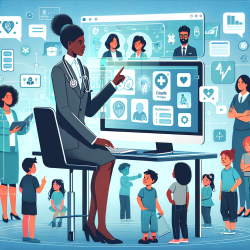Introduction
In the evolving landscape of healthcare, interprofessional collaboration (IPC) is a cornerstone for delivering quality patient care. The research article "An Integrative Review of Interprofessional Collaboration in Health Care: Building the Case for University Support and Resources and Faculty Engagement" underscores the significance of IPC in healthcare education and outlines strategies for fostering it within academic institutions.
The Importance of Interprofessional Collaboration
Interprofessional collaboration involves the concerted effort of healthcare professionals from diverse disciplines working towards a common goal. This collaboration is essential in addressing complex healthcare challenges, improving patient outcomes, and reducing costs. The World Health Organization and other bodies have emphasized the need for IPC, making it a global priority.
University Support and Faculty Engagement
The article advocates for a dual approach—both top-down and bottom-up—to instill a culture of IPC in healthcare education. University administrations are encouraged to create strategic plans that promote IPC through curricular, course, and clinical initiatives. Faculty engagement is crucial, as they are the primary drivers of change within academic settings.
Implementing IPC in Educational Settings
To effectively implement IPC, universities should consider the following strategies:
- Curricular Integration: Develop interprofessional courses or modules that emphasize teamwork, communication, and collaborative problem-solving.
- Clinical Simulations: Engage students in simulations that mimic real-world scenarios, allowing them to practice IPC skills in a controlled environment.
- Faculty Development: Provide training and resources for faculty to incorporate IPC into their teaching practices.
- Institutional Support: Secure commitment from university leadership to fund and support IPC initiatives.
Challenges and Solutions
While the benefits of IPC are clear, challenges such as resource allocation, faculty resistance, and curriculum redesign must be addressed. Solutions include fostering a culture of collaboration, providing incentives for faculty participation, and leveraging technology to facilitate interprofessional learning.
Conclusion
Interprofessional collaboration is not just a buzzword but a necessary paradigm shift in healthcare education. By implementing the strategies outlined in the research, universities can prepare future healthcare professionals to work collaboratively, ultimately improving patient care and outcomes.
To read the original research paper, please follow this link: An Integrative Review of Interprofessional Collaboration in Health Care: Building the Case for University Support and Resources and Faculty Engagement.










